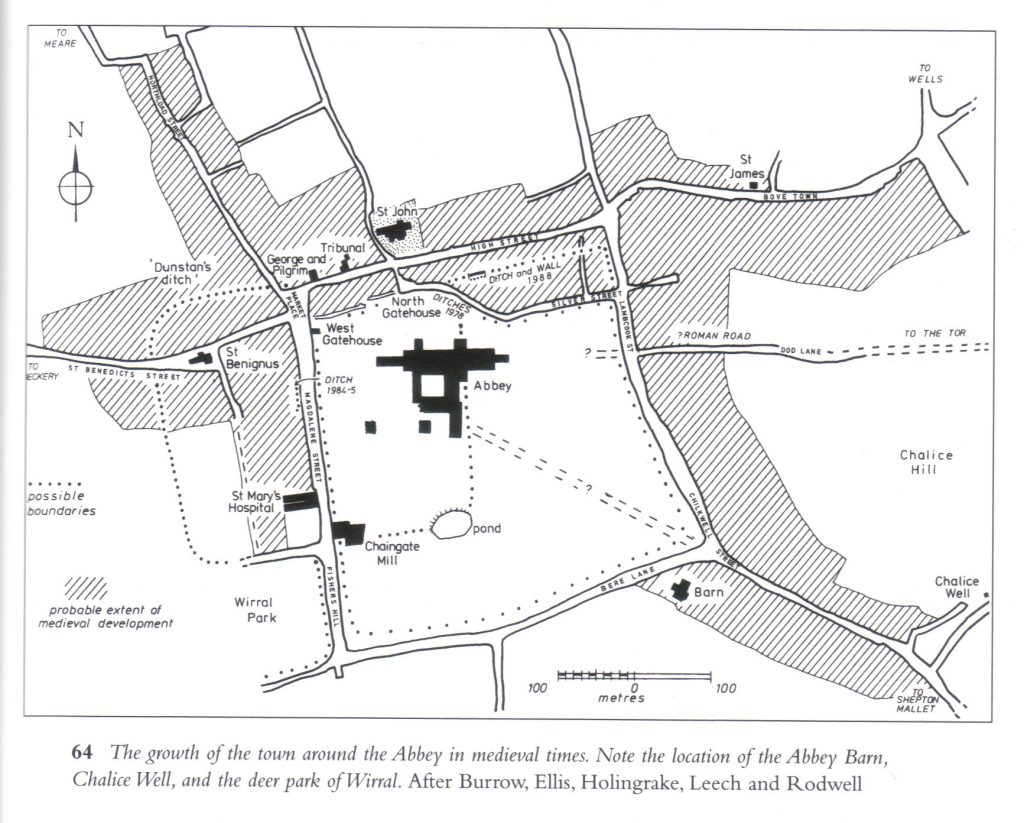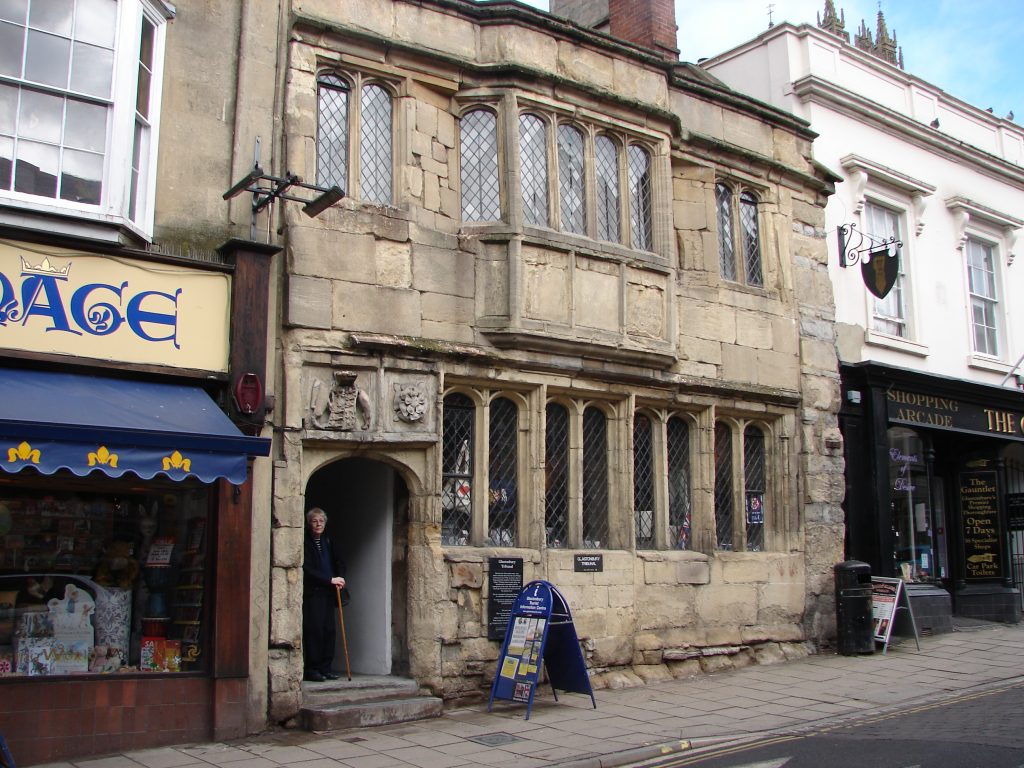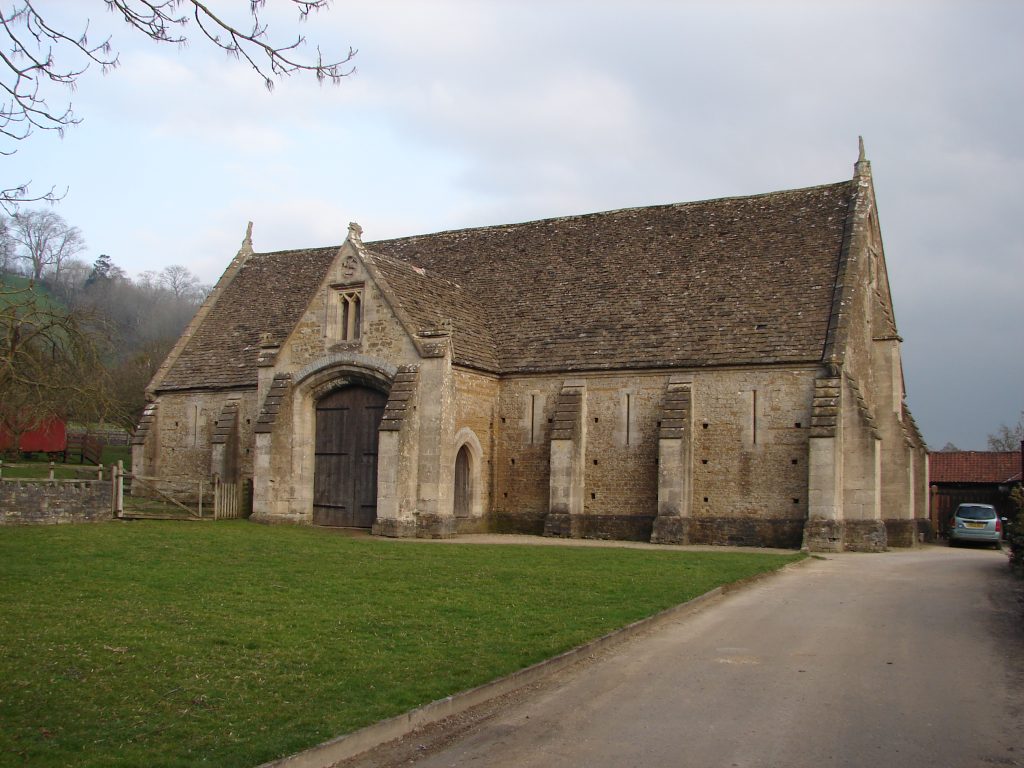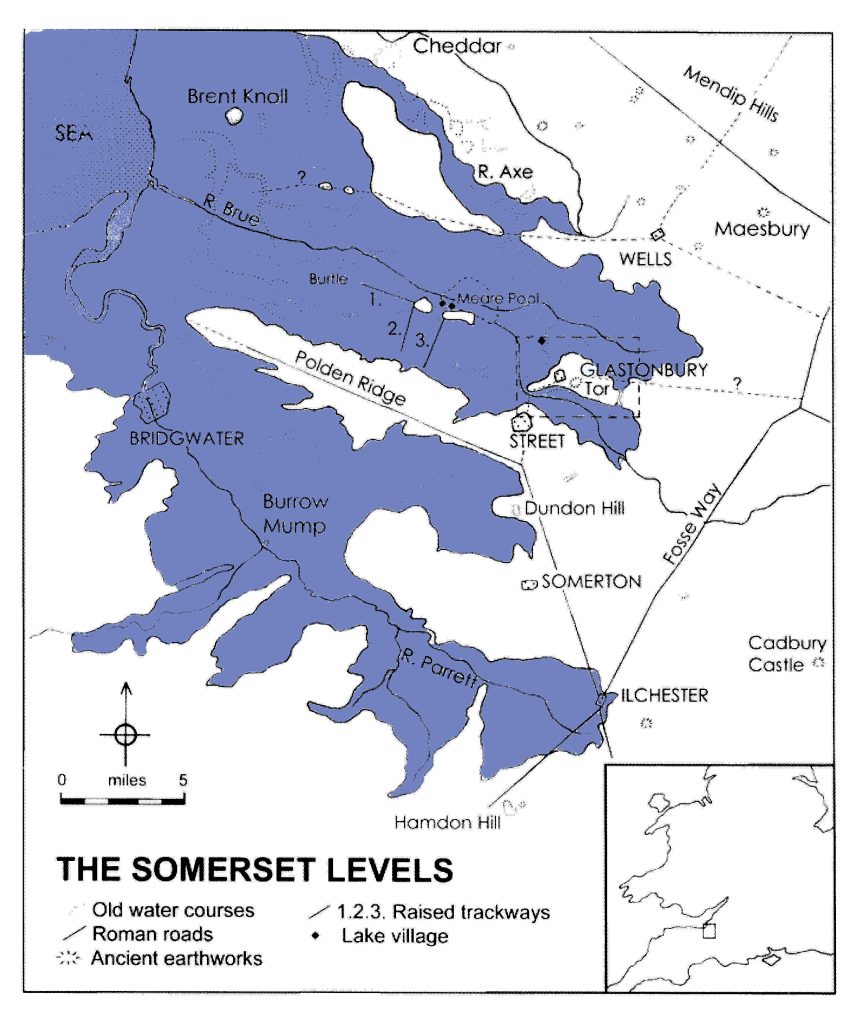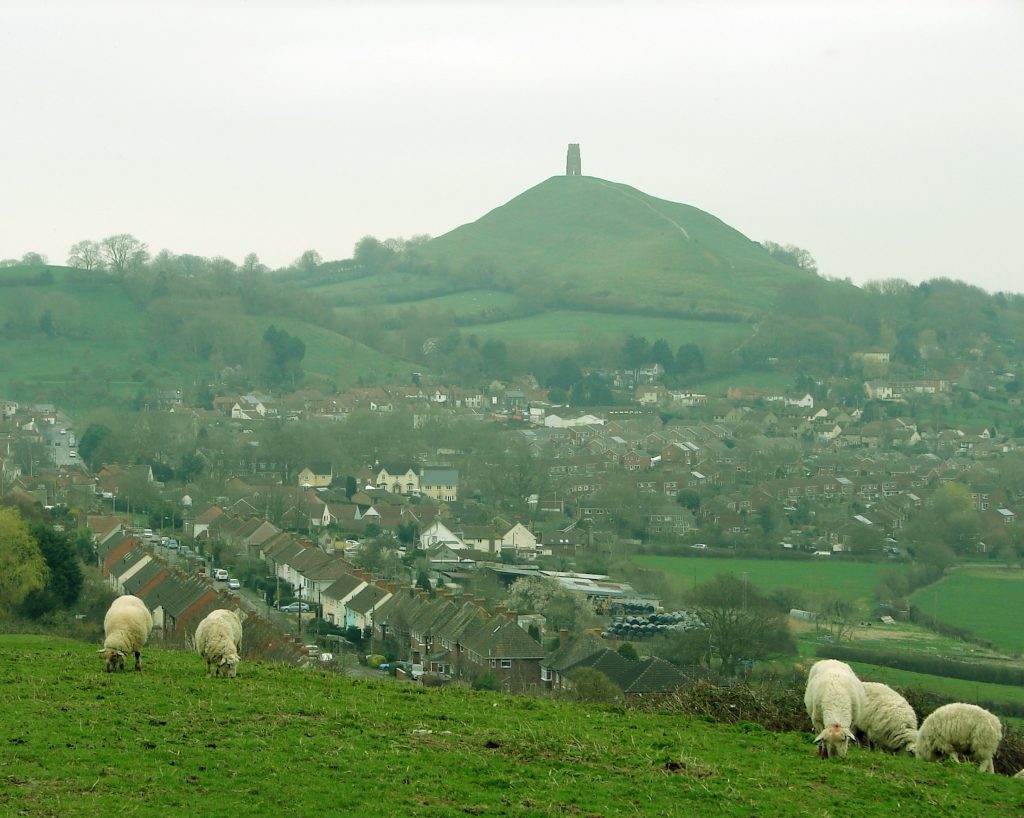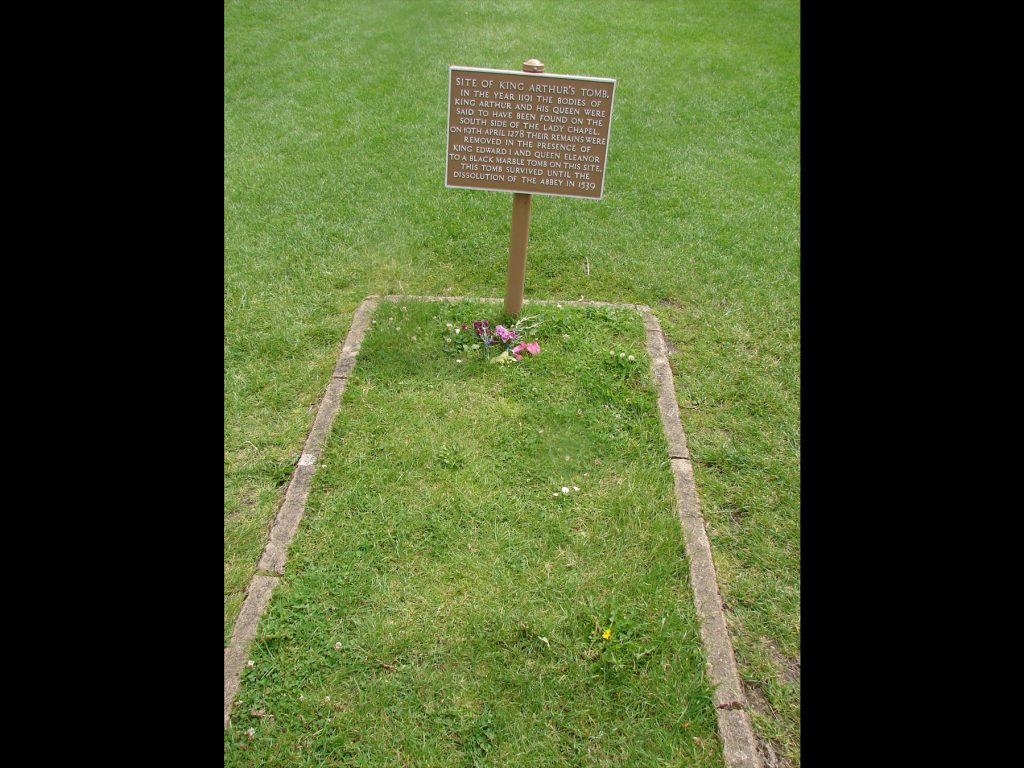The topic of this posting is the history, starting with the Norman Conquest, of Glastonbury, Somerset, site of Joseph of Arimathea’s Treasure, fifth book in my Lady of Apollonia West Country Mysteries. In my last posting, describing the history of the town in its first millennium, I included several legends along with actual history. Glastonbury’s history as we move into the second millennium becomes more solid.
In the middle ages, the town was centered around an important monastery called Glastonbury Abbey, largely just a ruin today. The map, shown above, illustrates how the medieval town grew up around the abbey grounds. A marketplace developed near the northwest corner of the abbey grounds and to the south where Magdalene Street was quite wide. The town provided support to the abbey, but it was an important medieval wool trade center as well. I will speak more of the abbey in my next posting. Almost all the remains of the buildings on the abbey grounds are ruins, thanks to the dissolution of the monasteries in the 16th century by King Henry VIII.
Other medieval buildings still exist in the town which give us some insight into various aspects of medieval life. They include two ancient parish churches, some almshouses, and several abbey buildings outside the actual abbey grounds. On the north side of the High Street is the Tribunal, shown above, with me standing in the doorway. The Tribunal gets its name from the possibility that it was used as a court, either by the abbey or as a secular court venue, but this is not well documented. Similarly, it may have been used by one of the abbots as a hospice, or perhaps it was just a medieval merchant’s dwelling. It now houses the local tourist information office and the Glastonbury Lake Village Museum.
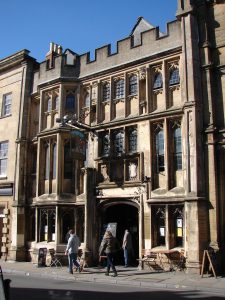 The present-day George Hotel and Pilgrims’ Inn, shown on the left, is a few buildings to the west of the Tribunal. It was the medieval abbey’s Pilgrims’ Inn and provided a place for many of the pilgrims who visited the abbey to stay during their visit. The building survived the dissolution of the monasteries and became the George Hotel in the 19th century. These earlier names are preserved in the present title. The abbey’s coat of arms, as well as that of King Edward IV, is above the door.
The present-day George Hotel and Pilgrims’ Inn, shown on the left, is a few buildings to the west of the Tribunal. It was the medieval abbey’s Pilgrims’ Inn and provided a place for many of the pilgrims who visited the abbey to stay during their visit. The building survived the dissolution of the monasteries and became the George Hotel in the 19th century. These earlier names are preserved in the present title. The abbey’s coat of arms, as well as that of King Edward IV, is above the door.
Another abbey building to survive in Glastonbury is its tithe barn shown below, located southeast of the abbey grounds. Further afield, there are other buildings related to the abbey and medieval life, including the abbey fish house, the abbot’s summer residence, and the parish church, which was built by Glastonbury Abbey, several miles away in the village of Meare. There can be no doubt that medieval life in Glastonbury was not only centered around the abbey, but the abbey was also intertwined with some of the surrounding area.
In Glastonbury itself, the abbey’s influence is felt in other medieval buildings which still exist. The abbey was involved with the creation and operation of St. John’s Parish Church on the High Street and its daughter church, St. Benedict’s, to the west of the abbey. Because of the strong involvement of the abbey in parish affairs, St. John’s was sometimes caught between the local abbot and the Bishop of Wells and Bath in whose diocese Glastonbury is situated. There was a picture of St. John’s in my recent posting of April 26.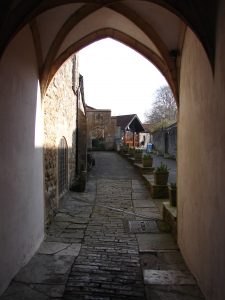
Finally, the medieval town often turned to the abbey for support. There are remnants of two medieval almshouses along Magdalene Street which runs along the west side of the abbey grounds. Just inside the main gate to the abbey are almshouses for women, shown on the right side of the picture on the right. The Hospital of St. Mary Magdalene, also on Magdalene Street, was originally built by the abbey as almshouses for ten men, some of whom were pilgrims to the abbey.
In my next posting. I will focus on the history and some wonderful legends of the abbey.
